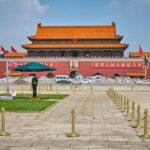DHAKA – A desire to cling to power, intolerance for dissent and failure to see the writing on the wall were what eventually unravel Sheikh Hasina’s iron-fisted rule of 15 years.
The walls came crashing down when Hasina’s brutal tactics led to a bloodbath and the intelligence agencies suppressed information to feed her only what she wanted to hear. By the time she realised it, things had already spiralled out of control.
Neither the large-scale killings, nor the relentless propaganda, nor the repressive machinery could prevent Hasina’s downfall — one that jeopardised the future of her decades-old political party and left hundreds of thousands of activists in uncertainty.
Hasina fled to India exactly a year ago this day as her fabled fortress of popularity was washed away by a deluge of angry protesters in Dhaka.
The Daily Star talked to seven key Awami League leaders and senior police officials who were delegated with crucial responsibilities during the tumultuous days of July-August of 2024. Taken together with the information from the UN fact-finding report on the uprising, these personal accounts provide a vivid description of what transpired between Hasina and her close aides inside the Gono Bhaban during her last days in power.
The final countdown
August 5, 2024. The final day unfolded with intense drama.
Around 9:00am, Hasina came down to the ground floor of the Gono Bhaban, prepared to head to the Bangabhaban to request a declaration of a state of emergency, according to sources present with her.
Around the same time, the Special Security Force sought clearance from the police via wireless communication, stating: “Victor-2 will go to the Bangabhaban to meet with Victor-1.” According to the police code, Victor-1 and Victor-2 refer to the president and the prime minister, respectively.
The police responded promptly, clearing Hasina’s movement immediately. Under normal circumstances, a VVIP movement typically occurs within 10 minutes of receiving police clearance. However, even after 40 minutes, no such movement took place in this case.
Then a message was relayed to the police’s wireless system, saying “Victor-2 will not move now. We will inform you if there is any movement later on.”
During those 40 minutes, senior officers of the security forces stationed on the ground floor of the Gono Bhaban assured Hasina that the situation was under control and a declaration of emergency was unnecessary. Following their assurance, Hasina returned to the first floor of the Gono Bhaban, according to the sources.
Meanwhile, preparations were underway at the Gono Bhaban for Hasina’s scheduled address to the nation. A script was supposed to be drafted but she later decided to speak extempore. A BTV recording unit had been summoned. The camera unit remained on standby at the premises.
According to the sources, some of Hasina’s key personal staff were denied entry to the Gono Bhaban. They were asked to wait in the “call-on” room located beside the main congregation hall of the Gono Bhaban.
Meanwhile, in Uttara, a huge segment of the “March to Dhaka” entered the city without any obstacle by late morning. News of this breach spread rapidly, prompting a surge of protesters on the streets.
To counter the Dhaka March scheduled for August 5, leaders and activists of the Awami League and its affiliated organisations had been deployed across the capital beginning the night of August 4. However, when the processions managed to enter Dhaka on the 5th, most of the deployed activists retreated.
Around 11:00am, police for the last time tried to foil the Dhaka March — a mass mobilisation effort by protesters aiming to enter the capital. A team comprising around two hundred armed police rode up to Kakoli intersection, led by the former chief of the police’s Counter Terrorism and Transnational Crime (CTTC), Md Asaduzzaman and Dhaka Metropolitan Police (DMP)’s former additional commissioner Harun ur Rashid.
Once they reached the intersection, Harun paged the deputy commissioner (Gulshan division) of DMP Rifat Rahman Shamim for reinforcements but got no response. Since the protesters far outnumbered them, the law enforcers were forced to retreat to the police headquarters.
By this time, many police officials were unavailable for wireless communications, and the top officials stationed at the Police Headquarters were left in the dark.
At one point, the top officials were evacuated — airlifted by two helicopters from the rooftop helipad of the headquarters — and taken to the safety of the cantonment.
The first helicopter carried the then police IGP Chowdhury Abdullah Al Mamun, Special Branch chief Monirul Islam, additional IG Lutful Kabir, deputy inspector general (admin) Aminul Islam, DMP commissioner Habibur Rahman, among others. The second chopper carried additional deputy inspector general (Police Headquarters) Proloy Joardar, CTTC chief Asaduzzaman and deputy inspector general Amena Begum.
According to the sources, around 11:00am, top officials from various state security agencies attempted to convince Hasina that the situation had spun out of control and that she needed to leave the Gono Bhaban immediately. Leaders of security forces also informed her that they would not be able to stop the protesters from reaching her residence.
However, the sources said, Hasina reportedly refused to heed the advice and in the final moments, she asked to be taken to Tungipara, her ancestral home. For security reasons, officials instead insisted on relocating her to the cantonment.
The United Nations Fact-Finding Mission’s team also spoke to an official who had personally called Hasina on August 5 to inform her that things were not going as planned.
“In the late morning, the army chief told the then prime minister that the army would not be able to prevent protesters from reaching her residence,” said the UN report.

Sheikh Hasina getting into a helicopter to flee the country on this day last year. PHOTO: THE DAILY STAR
Around 1:30pm, vehicles carrying Sheikh Hasina and Sheikh Rehana exited through the lake road gate of the Gono Bhaban and proceeded to the old Trade Fare ground, from where they boarded a helicopter to the air force base in Kurmitola. From there, they flew over the Jashore border, crossed into India via Kolkata, and landed at Hindon Air Base in Ghaziabad, near New Delhi, at 5:36pm local time.
As she was leaving the Gono Bhaban, party members and personal staff that were present there were in tears and Hasina reportedly urged them to remain calm and instructed them to seek safety.
The Lead-Up
It was Hasina’s wayward remark during a press conference that lit the fuse to the powder keg. On July 14, 2024, the ousted premier likened the anti-quota protesters to descendants of Razakars, the vile collaborators of the 1971 Liberation War. It sent shockwaves that evening across university campuses — the protest hubs till then. It was perhaps the first crack in the fabled dam.
The second explosion came two days later when police shot Abu Sayed, a university student, in Rangpur. This truly set off the protests. The trickle became a current and then a deluge that toppled the Awami League government in just three weeks.
July 18
July 18 was when the bloodbath intensified.
A top policeman who was present on the ground throughout the July-August movement said that on the morning of July 18, around 8:00am, the field police got a directive sent from DMP commissioner Habibur Rahman saying, “Use whatever you need to use to save your lives.”
The investigation agencies have the recording of a voice conversation that allegedly took place between Hasina and Jatiya Samajtantrik Dal leader and former information minister Hasanul Haq Inu.
The Daily Star listened to the full recording but did not independently verify it forensically.
The caller is alleged to have been Inu and the receiver Hasina. The caller began with platitudes, praising the government’s handling of the protests, and then expressed concern about the situation in Jatrabari and Shanir Akhra.
The receiver, allegedly Hasina, said she was sending helicopter reinforcements and that they would “bomb the area from helicopters.”
The caller added that the protesters were known political cadres and said, “I have already made lists of the opposition activists in my area. I told them to pick up all the men in Kushtia.”
The receiver congratulated him and said Awami cadres would comb their localities for opposition activists.
The caller agreed and said all BNP and Jamaat men should be identified and detained.
On the evening of July 18, a phone call took place between former Hasina and then Dhaka South City Corporation mayor Sheikh Fazle Noor Taposh. The Daily Star previously published the call’s contents and verified it forensically.
Taposh, also her nephew, listened as she talked about aerial surveillance.
“We are now doing things differently. We are capturing photos with drones, and sending helicopters to several places,” she said.
Hasina further elaborated on the use of aerial surveillance to monitor public gatherings while Taposh was heard repeatedly insisting on launching a mass arrest campaign.
In a direct statement, Hasina said: “I have given instructions, now I have given direct instructions; now they will use lethal weapons. Wherever they find them, they will shoot directly.” Taposh replied, “Yes, yes.”
From the night of July 18, there used to be a meeting of a “core committee” every single night at the residence of then home minister Asaduzzaman Khan Kamal. Then additional commissioner (DMP) Harun, DMP commissioner Habibur Rahman, ADC (Tejgaon Division) Hafiz Al Faruk, additional SP (Dhaka District) Abdullah Hel Kafi, Syed Nurul Islam (DIG) (Dhaka Range), among others, would attend informal meetings every night at Kamal’s residence and those meetings used to decide what actions to be taken the next day.
The UN report cited an attendee saying the home minister instructed the BGB commander to order his members to use lethal force.
July 19
On that day, Hasina convened the 14-party alliance. Leaving them waiting, she first met with the chiefs of the armed forces and security officials in an adjacent room.
A decision was made to issue a curfew and deploy the army in aid to civil administration.
The UN report stated that at that meeting, Hasina told security force officials to kill protesters to quell the unrest and specifically demanded they “arrest the ringleaders of the protests, the troublemakers, kill them and hide their bodies.”
She then informed the 14-party alliance of her drastic decision.
After the meeting, AL General Secretary Obaidul Quader publicly announced that there was a “shoot-at-sight” order.
July 20-21
An Awami League leader who was stationed at the Gono Bhaban throughout the crisis told The Daily Star that following the imposition of curfew and deployment of the army on July 20, the party’s activities gradually diminished, and communications with Sheikh Hasina began to weaken.
According to documents found in the Gono Bhaban by this newspaper, Hasina was tallying material losses.
For an administration actively hiding the true death toll, Hasina received two intelligence reports detailing the destruction of 66 government and Awami League structures. The reports included details such as rooms trashed, vehicles destroyed, and even which car windows were broken.
One report was submitted on July 20, the other on July 21, titled “Description of damages to government establishments that occurred due to BNP-Jamaat’s recent destructive activities.”
Five days after getting this report, Hasina would visit the vandalised Mirpur-10 metro station and sob into a napkin. More than 200 people, including children, had been gunned down by military-grade weapons by her security forces by then.
July 27
Despite the mounting casualties, Hasina remained unwilling to engage with the protesting students.
According to the sources, senior intelligence officials and some party leaders urged her to initiate a dialogue with the students to stabilise the situation.
However, Hasina reportedly dismissed the suggestions, stating that she had no intention of conceding. She instead instructed security forces to continue operations against the demonstrators.
July 29
Hasina called a meeting with her 14-party allies to discuss the overall situation on July 29.
At the meeting, alliance leaders lambasted Obaidul Quader for issuing the “shoot-at-sight” order. They claimed Quader made the announcement after leaving a July 19 meeting, even though no such decision had been taken.
They also criticised Harun, then head of the Detective Branch, for detaining student coordinators and the chaos that followed.
The 14-party leaders accused the police of becoming trigger-happy in line with Quader’s directives.
Hasina intervened, claiming the protests were not by general students but by Jamaat-e-Islami and its student wing, Shibir.
After her comment, one alliance leader exclaimed, “Then why are you not banning Jamaat-Shibir?” Other leaders echoed the demand.
The meeting unanimously decided to ban Jamaat-Shibir.
Following this, Quader publicly announced on August 1 that there was no “shoot-at-sight” order. The six detained coordinators were released, and Jamaat-e-Islami was banned under the Anti-Terrorism Act.
August 2
Late in the evening, Hasina summoned a group of senior leaders to the Gono Bhaban to assess the situation. According to one of the attendees who spoke to The Daily Star, the leaders agreed that the unrest was unlike any other in the past, and navigating it would not be easy.
She was reportedly displeased with Obaidul Quader. That day, Hasina instructed Quader not to go to the party’s Dhanmondi road number 3 office, and removed him as party spokesperson. In his place, she appointed Presidium Member Jahangir Kabir Nanak to speak to the media.
August 3
Hasina realised that the situation was going out of control.
Yielding for the first time since protests rocked the nation, Hasina extended an invitation to the students to meet her at her official residence.
“The doors of the Gono Bhaban are open to you. I want to listen to those protesting against the quota system. I do not want conflict,” she was famously heard saying. In front of television cameras, she pledged justice for those killed during the uprising.
Student leader Nahid Islam responded to her publicised call on his social media. He wrote, “There’s no point asking for justice from a murderous government anymore, and sitting down for talks isn’t an option either. The time to apologise has long passed.”
That very day marked the historic gathering at the Central Shaheed Minar, where thousands of voices united under a single demand — Hasina’s resignation.
Later that evening, Hasina held a closed-door meeting with former information minister MA Arafat and Salman F Rahman to discuss launching a sweeping social media campaign spanning every district. Her plan was to activate cyber warriors all across Bangladesh to push the Awami propaganda and shore up digital support for the falling government.
August 4
Hasina spent the day concocting various ways to go harder on the protesters and rejecting suggestions for a graceful exit, the sources said.
The investigation agencies possess the recording of a voice conversation that allegedly took place between Hasina and another yet unidentified law enforcement officer.
The caller, alleged to be Hasina, complained that protests are flaring up all across Dhaka, in Uttara, at Mirpur 10 and in front of Brac University.
“You have to … from the get go,” said the caller, not explicitly saying what needs to be done. The receiver responded saying that he understood.
The caller continued, “When they are chased away, they will try to hide in the alleyways. Find them, and this time, you will show no mercy (eibar ar kono kotha nai). Straight away ….”
Again, the caller did not explicitly say the things she wanted to be done, but the receiver answered in the affirmative.
Hasina chaired a high-level National Security Council meeting attended by the chiefs of the army, BGB, police, DGFI, NSI, along with the home and education ministers, on the morning of August 4, according to the UN Fact-Finding Mission and also what The Daily Star learned by talking to individuals present at the meeting.
The primary topic was whether to reinforce a curfew to prevent the “March to Dhaka.”
One of the sources, with knowledge of the meeting, claimed that senior figures from the party attempted to persuade Hasina on the night of August 4, urging her to step down. She rejected their call and instead ordered an even tighter curfew from the morning of August 5.
This was reflected in the findings of the International Crimes Tribunal. In a document detailing the charges against Hasina, which was submitted by the prosecutors to the ICT, it is stated that her security adviser, Maj Gen (retd) Tarique Ahmed Siddique raised the issue of the then PM’s resignation. In response, she became angry and said she would not resign under any circumstances.
However, former police IGP Chowdhury Abdullah Al Mamun, who was present at the meeting, gave a confessional statement to the ICT, and he claimed that there was no conversation about resignation.
“We tried to give the government accurate information, but they were not prepared to hear of their weaknesses,” said Mamun in a statement.
At another meeting inside the Gono Bhaban, a decision was taken to bring Awami Leaguers from all across the country to Dhaka to commemorate the birth anniversary of Hasina’s eldest brother Sheikh Kamal.
A similar gathering had been planned for August 1, but was postponed on the advice of party leaders and security officials who said it would escalate the situation further.
In an attempt to turn the tide in her favour, a proposal was mooted at the August 4 meeting that party activists be brought to Dhaka from across the country to demonstrate the support the then government still had.
But security forces again advised against the plan, stating the curfew should be respected and deploying cadres would cause more bloodshed. The party instead instructed local leaders to remain in their areas, the sources said.
A follow-up meeting was reportedly held later that evening at the Gono Bhaban, with the participation of all heads of the armed forces, along with top officials from the police, Rab, BGB, and the home ministry, according to both the UN and The Daily Star’s own sources.
In his confessional statement, ex-IGP Mamun said that Hasina’s sister Sheikh Rehana, law minister Anisul Huq and home minister Kamal were also present and that the meeting lasted 30 to 45 minutes.
The Daily Star’s source present at the meeting said that representatives from the security forces said they would make sure the March to Dhaka would be stopped at any cost. The home minister left the meeting shortly after midnight.
Following the initial meeting in the evening, the officials left the Gono Bhaban and moved to the control room of the army.
Inside the control room, Mamun, along with the director-general of Special Security Force Lt Gen Mujibur Rahman, the heads of Rab, Detective Branch, Intelligence Agencies and Dhaka Metropolitan Police commissioner Habibur Rahman discussed the particulars of law enforcement deployment, according to our source as well as the confessional statement of ex-IGP Mamun.
A source said that since the security forces had assumed responsibility, the DMP commissioner ordered police deployment to be restricted to certain areas and shift to a roster-based system for August 5. No further central instructions were issued after that.
The meeting ended after midnight. In less than 12 hours, the authoritarian rule of 15 years crumbled and Sheikh Hasina fled the country.








